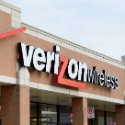
Verizon on Monday said it signed new agreements with two of the three big US cell tower companies, an indication that the operator is moving forward with its plan to spend an extra $10 billion over the next three years upgrading its 5G network with valuable midband spectrum.
Verizon did not disclose the financial details of its new agreements with Crown Castle and SBA Communications, though FierceWireless reported the agreements cover both macro cell tower and small cells.
Verizon did however offer a few insights into exactly how it plans to work with the tower companies to upgrade its network. The operator said the effort will include the installation of "new network equipment including basebands and antennas," and the hardware would be placed on "existing towers." Meaning, Verizon won't need to finance the construction of new towers – an expensive proposition – and that it will need more gear from its equipment suppliers Samsung, Nokia and Ericsson for its C-band deployment. The financial analysts at MKM Partners recently wrote that they expect Samsung to be the "principal beneficiary" of Verizon's C-band buildout.
Verizon has said it hopes to upgrade between 7,000 and 8,000 of its existing towers with C-band equipment within the next 12 months in order to cover around 100 million people with speedy 5G.
A question of density
Verizon recently told the financial analysts at Cowen that it has been adding macro cell towers to its network at the rate of about 2,000 per year, mostly in urban areas, and that it now counts around 68,000 macro sites. Verizon has also said it hopes to count up to 30,000 small cells by the end of this year, and that it will use both macro cell sites and small cells to deploy midband spectrum like the C-band.
The carrier has argued that it will not need more macro cell towers to deploy its C-band holdings – that's noteworthy considering signals in C-band spectrum can't travel as far as signals in the lowband spectrum Verizon has historically used for its wireless network. Verizon has argued that its existing cellular grid is dense enough to support a network in C-band spectrum.
Some financial analysts aren't so sure.
Verizon "may need to deploy more new sites than they have suggested, at least once they start to deploy outside of urban areas," wrote the financial analysts at MoffettNathanson in a new note to investors. They pointed out that Verizon counts significantly fewer macro tower sites than either T-Mobile (which expects to end its network upgrade program with 85,000) or AT&T (which counts around 80,000).
However, the analysts noted that Verizon's desire for more cell sites might be tempered by the roughly $50 billion it spent to acquire C-band spectrum licenses. "Site projections [for cell towers] can't ignore physics, but neither can they be divorced from economic realities," the analysts wrote. "The idea that Verizon will be able to layer C-band on existing towers in urban areas makes sense. The idea that it will be able to layer C-band on existing rural towers and meet its coverage targets does not."
Similarly, the financial analysts at New Street Research wrote that Verizon may end up needing more tower sites than T-Mobile because of the differences between the midband C-band spectrum that Verizon is using for 5G and the 2.5GHz midband spectrum that T-Mobile is using.
"All told, 2.5GHz should have a propagation advantage," the analysts wrote, rejecting Verizon's argument that C-band transmissions might actually travel farther than 2.5GHz transmissions.
"Based on our analysis, 2.5GHz will have a reach advantage in all markets, with a more pronounced advantage in rural markets (though we acknowledge that Verizon would challenge this assertion)," the New Street analysts wrote. "T-Mobile will come much closer to covering their existing midband footprint given better propagation and a denser grid to start with."
The lowband element
Both the New Street and MoffettNathanson analysts said that Verizon will likely employ carrier aggregation technology to improve the reach of its C-band network. Carrier aggregation allows operators to essentially "glue" together transmissions in different spectrum bands. Pairing C-band transmissions with transmissions in lowband spectrum ought to improve Verizon's coverage.
Verizon's Bill Stone previously told FierceWireless that the carrier could pair its C-band transmissions with its lowband 850MHz transmissions.
Verizon officials though have rejected the notion that Verizon might purchase lowband spectrum from the likes of Ligado in order to improve its C-band coverage area.
Related posts:
— Mike Dano, Editorial Director, 5G & Mobile Strategies, Light Reading | @mikeddano
About the Author(s)
You May Also Like










